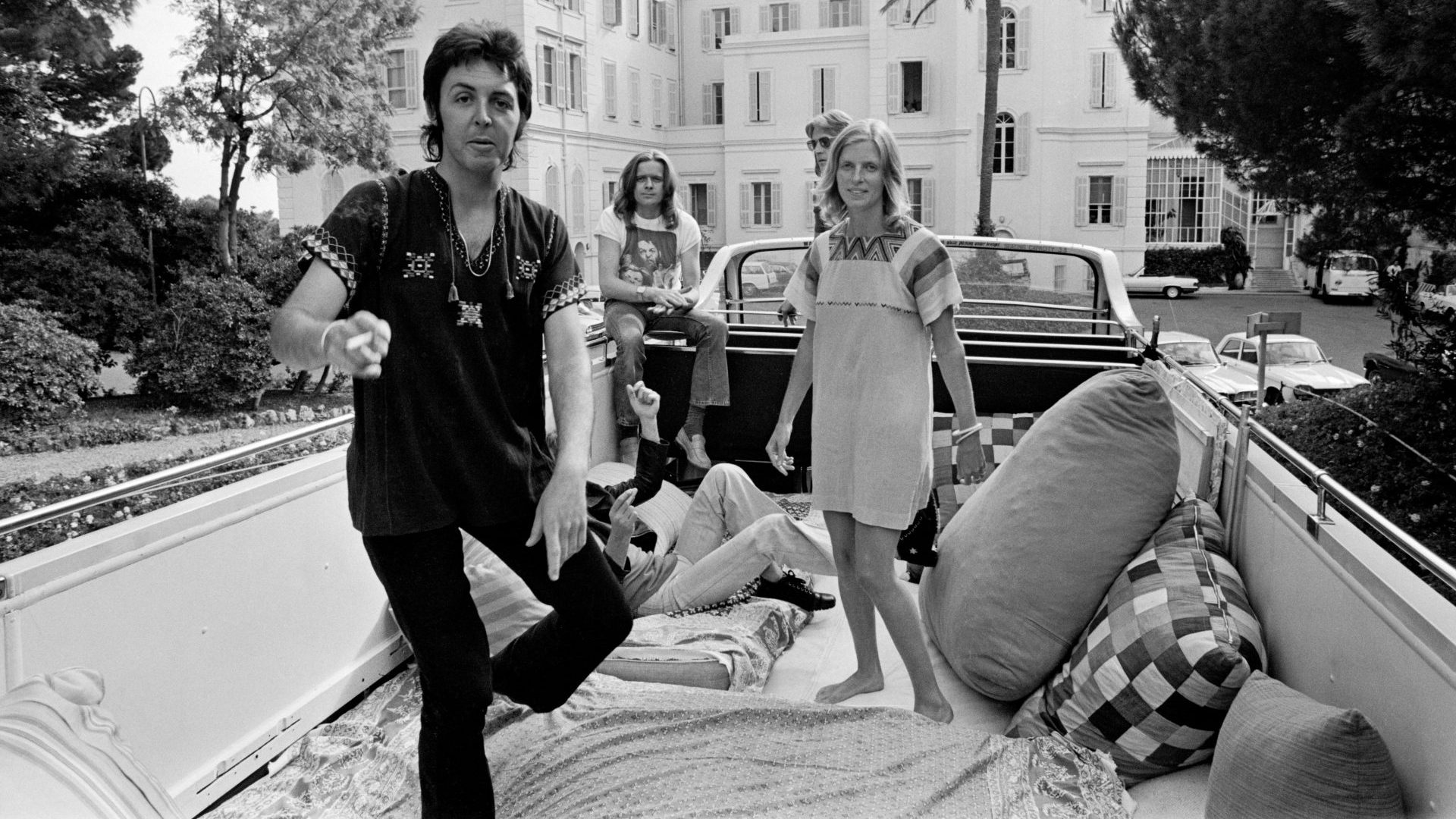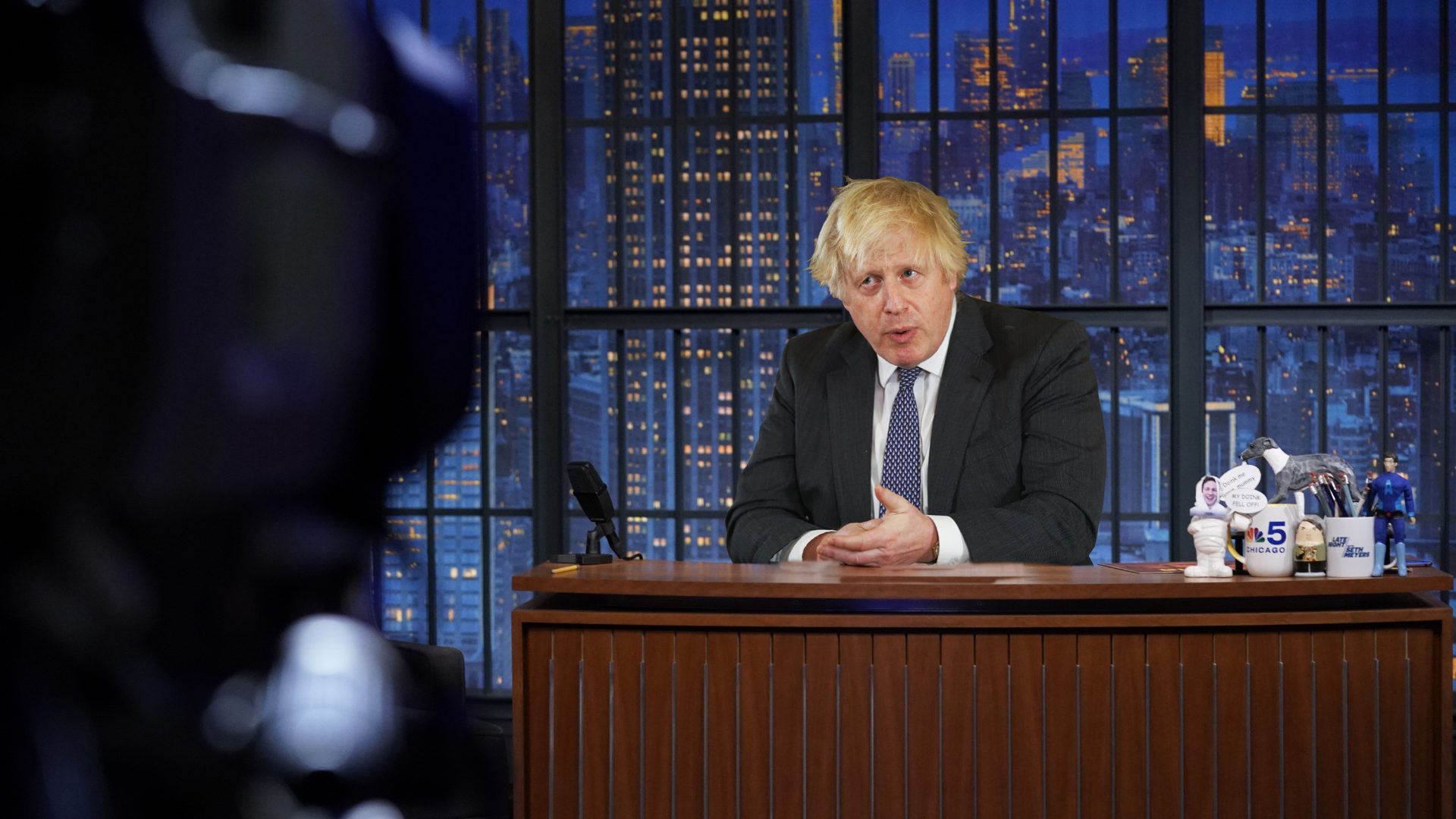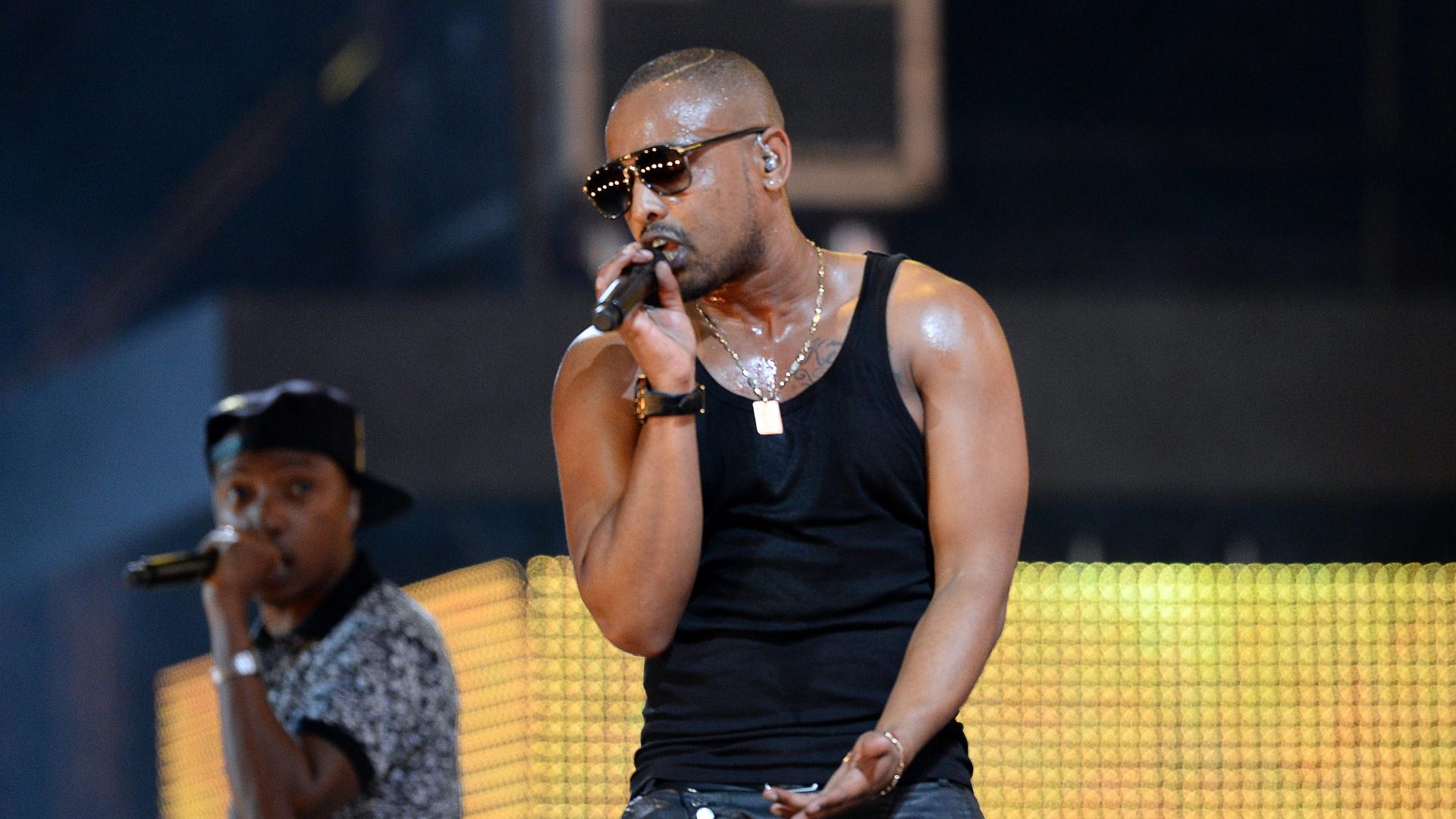Later this month, Paul McCartney will become the oldest performer to headline Glastonbury as, just days after his 80th birthday, he rolls out Beatles and solo classics to an audience of 100,000 and millions watching live on TV. Fifty years ago, though, with a couple of vans, children and dogs in tow, McCartney was setting off with his new band to realise a dream he’d had in the dying days of the Beatles, to play small venues and rediscover the love of playing live.
Heading north up the M1 and turning up unannounced at universities along the route, Wings raced through a set made up of 1950s rock’n’roll classics and a handful of new songs, promoting the back-to-basics Wildlife album before a sell-out tour of Europe that summer. It was the approach the Beatles had taken in January 1969, seen recently in Peter Jackson’s Get Back, before John Lennon ended any hopes of more concerts by telling Macca, “I think you’re daft. I want a divorce.”
Wings travelled the continent in a brightly painted open-top double-decker bus with mattresses on the top deck for sunbathing and a playpen for the children, playing to adoring crowds at night. Racking up over 7,500 miles in two months, they performed 25 concerts in nine countries, bringing a taste of Beatlemania to European fans who had not seen McCartney live since 1966.
Original Wings drummer Denny Seiwell recalls: “We did grunt work. We were out in the trenches. We were finding an audience, not just a Beatle audience. We had our own thing and people really listened hard. They were very indebted fans.”
Seiwell first auditioned for McCartney’s second solo album, Ram, in New York in autumn 1970. The former Beatle had recently released McCartney, a largely homemade low-fi recording deemed inconsequential by critics, and he relocated Stateside to work with the cream of New York session men on the follow-up.
He warmed instantly to the genial, towering Seiwell, a laid-back Pennsylvania native with a winning sense of humour. First introduced to drums by his father at the age of five, Seiwell later played in boys’ bands and navy big bands before moving to New York, where he became one of the most in-demand jobbing drummers, playing jazz in clubs at night and then swinging from session to session during the day, often not knowing who he was playing with until he arrived.
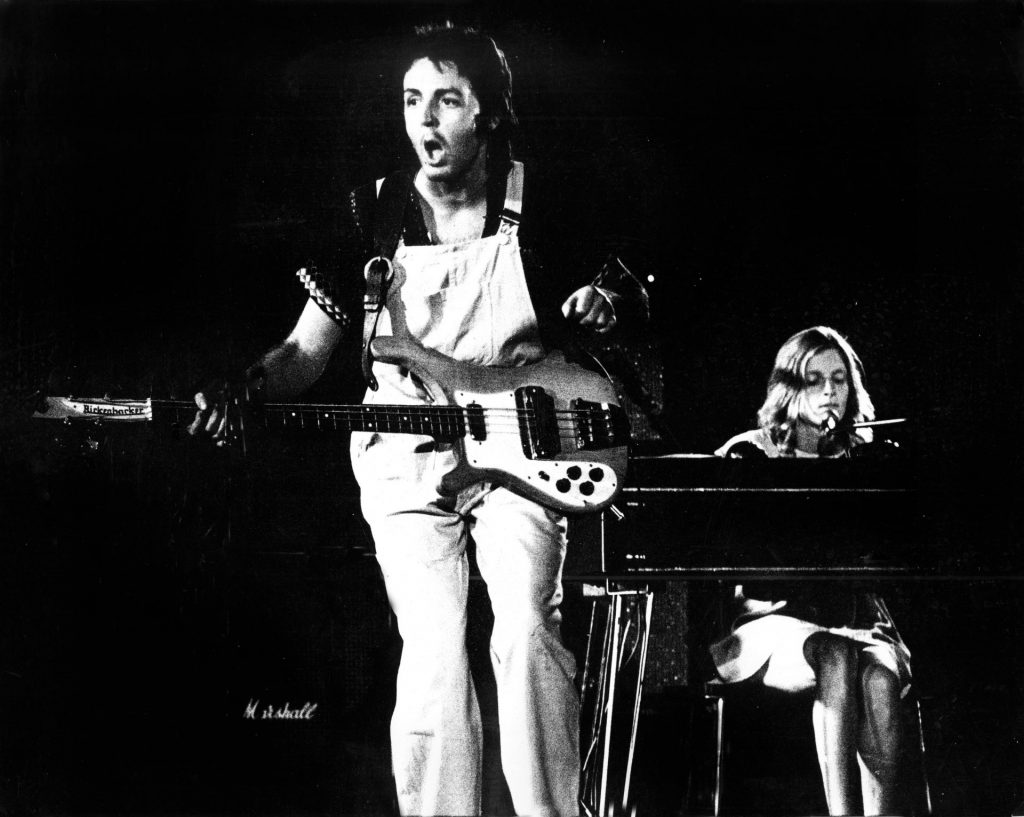
That October, turning up to a demo recording near Hell’s Kitchen, he was
instantly suspicious. The brownstone building looked derelict. Directed downstairs to a dingy basement, Seiwell feared he was about to be mugged. Waiting for him instead was one of the world’s most famous musicians.
“I go down there on heightened alert. There’s Paul and Linda sitting over the corner of this dirty basement. There’s no furniture. There’s a set of drums in the middle of the room. I said, ‘Hey, you’re Paul McCartney. What’s going on here?’ He said, ‘We’re coming to town to make a record and we’re looking at drummers. Do you mind playing for me?’ It was as simple as that.
“So immediately, I went right into Ringo and I had some fun with it. I think he liked my sense of humour. We had a few laughs. I gave him some shuffle, some rock, different beats. He said, ‘That’s all I need, thank you. That’s great, man’.”
Over the next few days, with New York’s music community abuzz with talk of the auditions, Seiwell was duly hired. By bizarre coincidence, he’d recently taken up the chance to buy the drum kit Ringo Starr played at the Beatles’ legendary Shea Stadium gig after a friend acquired it at auction. McCartney turned up to day one of recording to find Seiwell sitting behind a kit bearing the Beatles logo.
During a Christmas break back at the family farm in Scotland, McCartney took the painful, tumultuous decision to file a lawsuit against the other three Beatles and Apple Corps in the high court. It was the only way to be free of controversial manager Allen Klein and formally dissolve the Beatles’ partnership.
By contrast, back in New York, the Ram sessions found a playful McCartney revisiting the rock’n’roll of his youth with full-throated Little Richard-style vocals. The rockers were interspersed with moments of whimsy, pastoral folk and classic pop with Beach Boys harmonies and lush orchestrations. Seiwell’s versatility from hundreds of hours of session work equipped him perfectly.
“Paul came in fully ready,” says Seiwell. “It was in his head; he knew what he wanted. He didn’t tell us what to do. One time only did he tell me to come up with a different part than I came up with. He would play the song for us on piano or guitar and sing it through and then we’d start coming up with parts. We worked fast and we worked hard. It was very rewarding in every regard.”
The album was a big commercial hit across Europe and America, but savaged by critics, who took Lennon’s side in the increasingly bitter Beatles
divorce. It is now viewed as a classic. Then, perhaps stung by the reviews and missing the camaraderie of a band, McCartney called Seiwell and former Moody Blues guitarist Denny Laine to Scotland and invited them to form a new group. As rehearsals got under way, Seiwell and his wife, Monique, rented a home with a sea view near the McCartneys’ farm in Campbeltown on the Kintyre peninsula.
The songs demoed at McCartney’s Rude Studios in Scotland and recorded at Abbey Road in London were very different to the intricate material on Ram. They were raw and captured a band finding its sound. The album was done and dusted, including overdubs, inside two weeks. McCartney eschewed anything Beatley in favour of a new direction. A high concept album this was not, but his sense of fun and melody shines through on a set of songs given an extra sheen on this year’s 50th anniversary limited-edition vinyl release.
“It was Paul’s idea to give the world a first look at a new band,” said Seiwell.
“We didn’t want to pull any punches and spend a year making a record that
didn’t even come close to Let It Be. We wanted to show the world this is a new band, give it a chance. So, five of the eight songs were first takes.”
Without the security of his long-time Beatles bandmates on stage, McCartney found comfort in having Linda alongside him. As with Ram, Wildlife was notable for the couple’s intertwined vocals, with Laine adding an extra ingredient that made up the classic Wings sound. The European jaunt was Linda’s first major outing as a musician, and she came under fierce scrutiny from the music press.
Says Seiwell: “What Paul talked about many times was having that timbre of voice that didn’t exist in the Beatles, having that added to his music. He really liked that a lot.”
With Henry McCullough recruited as lead guitarist, Wings began rehearsals
ahead of a live tour. They played 11 shows, crisscrossing England and Wales with only an equipment truck and a 12-seater passenger van. They stopped at university towns, sending roadies to tell incredulous student union reps they had Paul McCartney in a van outside, ready to play a gig. While equipment was set up, the band went in search of accommodation for the night.
Determined not to play any Beatles material, they barely had enough songs to fill half an hour, and repeated the upcoming single Give Ireland Back to the Irish (McCartney’s response to the events of Bloody Sunday) twice to fill the set.
“It was short but sweet and a lot of fun,” says Seiwell. “It really broke us in. It made us a band. Travelling together, eating chip butties, stopping in pubs and having fish and chips and staying in hotels, not five-star hotels, by the way. At the end of the night, after we were done with the show, we’d all get in the van again, with a box of money. One for you, one for you, one for you.”
After initial sessions for what would become the 1973 album Red Rose Speedway, Wings set off on tour across Europe in July 1972. There were again
no Beatles songs. Wings were a new band, not about resting on past glories, explained McCartney. Hi, Hi, Hi, written on holiday in Benidorm immediately before the tour, was added to the set as an up-tempo rocker and became a hit single later that year.
Red Rose Speedway was a poppy affair, but recordings from the European shows reveal a tight band unafraid to rock, exemplified by McCartney’s raw powerful vocals and McCullough’s bluesy lead guitar.
Opting for an open-top tour bus to catch some sunshine as they travelled, McCartney wanted something psychedelic. He tasked Tom Salter, tour manager and promoter and owner of the Gear boutiques in Carnaby Street, to give the bus a Magical Mystery Tour/Yellow Submarine theme. Otherwise, accommodation was basic, with standard bus seats downstairs and a galley.
The band began their European jaunt with a show at the Centre Culturel de
Châteauvallon in Ollioules in south-eastern France on July 9. From there, they snaked their way around southern France for further gigs in Juan-les-Pins and Arles before heading north to play L’Olympia in Paris.
The means of travel may have been rudimentary by 70s rock star standards, but the accommodation was not.
“We stayed at the Cap d’Antibes for five days,” says Seiwell. “That cost a fortune. We never made that money back. We lost money on the European
tour. And we had full houses, 20,000-seaters, packed, sold out every time. And we lost money because of the expenses. But we stayed in some beautiful places.”
From Paris, the band ended July in Munich and Frankfurt before heading to Switzerland for performances in Zurich and Montreux. The speed of their bus meant they often ran late.
“That bus only went 35 miles an hour, maybe downhill too,” Seiwell laughs wryly.
“There were times when we’d have to do like 200 miles between shows on
the motorway in Germany. Two hundred miles at 35 miles an hour takes a long time. So, we’d have been late. We’d have to stop someplace at a gas station and call the promoter and say, send cars to pick us up, we’ll never make it in time for the show tonight.
“I remember once, five lime-green, brand-new BMWs showed up. Each one had their own limo, and they just hit the road at 130 miles an hour.”
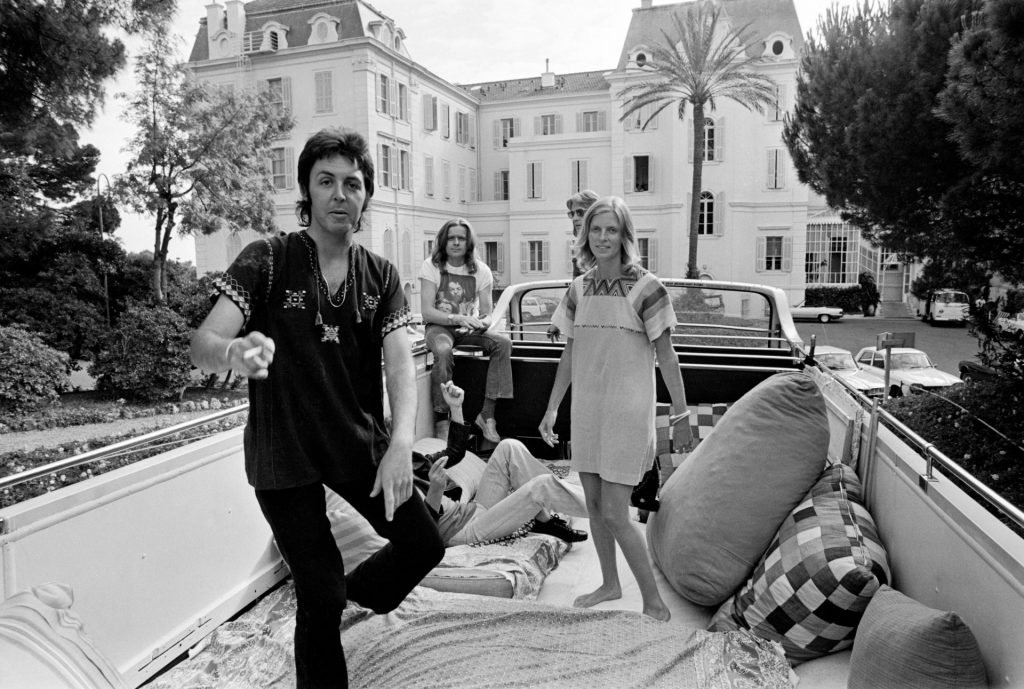
In August the band was in Scandinavia for shows in Denmark, Finland, Norway and Sweden, where the McCartneys were arrested and fined £1,000 for possession of marijuana. The tour wound up with a final run through Belgium and the Netherlands, including a show at Concertgebouw, a venue immortalised in the lyrics of 1975 Wings track Venus and Mars/Rock Show. The tour wrapped finally in West Berlin on August 24.
Early 1973 saw Wings touring Red Rose Speedway and bathing in the success of the Bond theme Live and Let Die, which Seiwell watched McCartney compose on the spot fresh from reading the Ian Fleming novel. Recorded live with an orchestra in George Martin’s Air London studios, it is still the performance Seiwell is most renowned for.
McCartney, who was keen to introduce his new bandmates to the world, had started to emerge, finally, from the Beatles shadow as a major solo artist. But just as the band were due to decamp to Lagos, Nigeria, to start work on what would become Wings’ most celebrated work, Band on the Run, the fallout from the Beatles break-up finally caught up with them. First McCullough left, then Seiwell on the eve of the band’s departure.
McCartney had been unable to access most of his assets because they were frozen due to the court receivership of Apple.
“We neglected some things that needed attention and that was the only reason I’m still not in the band,” says Seiwell. “The Beatles eventually worked its way into our orbit and the trouble Paul was having with the legal side of all of that stuff. That’s where the court receivership was established. The way I was told, we couldn’t even have an agreement that would be legal due to the court receivership of Apple.
“We were working on good faith, on the hippie handshake as they called it. We were all supposed to be part of a shareholder in this company that Wings was and we were all supposed to receive royalties and everything and some of that stuff slid by the way. We were so anxious to get the band going and establish ourselves … so some things were neglected and skipped over and pretty soon, we’re living on very little money and it became difficult for the band. We’re selling millions of records and we’re worried about paying our rent.”
Seiwell decided to head back to his regular session work in New York. It remains one of his only regrets.
Exactly 20 years later they were reunited backstage at a gig in Anaheim. By now living in California, the Seiwells asked a security guard to get a message to McCartney. A golf cart was sent to pick them up and take them for an emotional reunion.
The pair remain close. McCartney gave his seal of approval for Ram On – The 50th Anniversary Tribute to Paul & Linda McCartney’s Ram, Seiwell’s recent collaboration with Fernando Perdomo (available on Cherry Red records).
Looking back, Seiwell says: “It was such fun. Paul and I had a bond I’d never had with any other musician, period. We just knew intuitively what to do musically to make something happen. I’ve never experienced that with anybody. I worked with some of the best bass players but Paul, he was top of the heap. With him, it was all intuitive. It just came from another place, another source.”
Postscript: The Wings Over Europe tour bus is currently being renovated in the UK after being discovered lying in a dusty ravine in Tenerife. There are plans for it to become a living, mobile museum and to support charity fundraising. For more information on how to support the project: www.1972wingstourbus.com
Jeremy Blackmore is a freelance journalist, editor and copywriter

